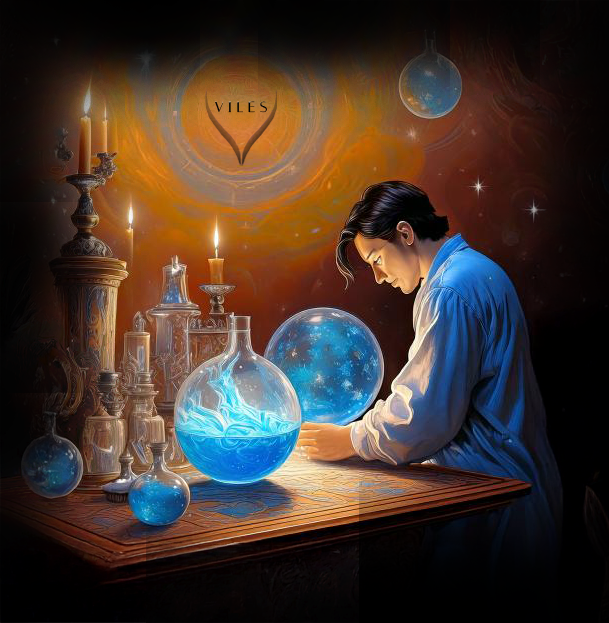
ANALYZE
As alchemists, our first point of order is to take a step back and analyze the materials before us.
We live in a world with thousands, if not millions of potential alchemical ingredients.
How do we choose which substances to work with, and more interestingly, how do we prove the worth of substances yet to be proven.
Careful research on each and every botanical extract is required for successful alchemy.
ANALYZE | ALCHEMY
Collapsible content
ANALYZING THE UNIVERSE

Nature is Your Connection To The Universe, A Transmutation From Darkness to Light
Alchemy is an ancient practice that explores the deep connections between matter, energy, and consciousness.
It is rooted in the belief that all things in the universe are interconnected, and by understanding the fundamental principles of nature, one can transform both physical substances and the self.
Alchemists saw the universe as a living, dynamic system where elements could be purified, transmuted, and elevated to higher states.
The famous quest to turn lead into gold was not just a material pursuit but also a metaphor for spiritual enlightenment, reflecting the idea that the soul, like metal, could be refined into something purer and more divine.
This pursuit is the one truth we have yet to dispute.
Through nature, through the science of nature and every natural thing on this earth, our light emerges, Anything that goes against nature is darkness.
Within us there is darkness.
Powerful people choose to wield it in a transformative way rather than let it take hold of our lives.
It is a weapon as much as it is a burden.
The potential for evil paired with the potential to fall prey to it's burdensome ways is all too much.
Alchemy is the way out, towards the north evenstar.
Towards transformation.
BIOACTIVE BOTANICALS

We Look For Life In Every Particle
From a natural wellness perspective, bioactive botanicals support the body's healing processes by providing essential nutrients, antioxidants, and plant-based compounds that promote balance and vitality.
These powerful botanicals help reduce inflammation, strengthen the immune system, and enhance overall well-being through gentle, holistic mechanisms.
Incorporating bioactive botanicals into daily life—through herbal teas, essential oils, and plant-based supplements—can naturally support physical and mental health.
CARRIER OIL COMPOSITION
Carrier Oils (Stable Compounds)
Carrier oils, unlike essential oils, are not volatile and are derived from plant seeds, nuts, or fruits. Examples of these oils are coconut, moringa, jojoba, and olive.
They contain a mixture of fatty acids, vitamins, and other compounds that nourish and protect the skin.
The chemical composition of each carrier oil depends on the plant source and the method of extraction.
These beautiful substances are composed of things like long-chain esters, waxes, and fatty acids.
Many carrier oils are rich in monounsaturated fats (oleic acid), making them highly stable and beneficial for moisturizing and protecting the skin.
ESSENTIAL OIL COMPOSITION
Essential Oils (Volatile Compounds)
The essence of a plant, captured. Swirling. Living. Waiting.
Essential oils are considered volatile substances, meaning that when exposed to air they evaporate quickly (unlike more stable oils such as olive, jojoba, coconut, etc.).
Many of the benefits of essential oils have yet to be discovered by modern science. We can track the trace chemicals found in each, but the expressions of essential oils in terms of how they interact with the human body is shrouded in mysticism.
Each oil is has varying degrees of anti-bacterial, anti-fungal, and anti-viral properties. Certain oils target pathogens on or within the body without completely destroying the microbiome in the way a modern antibiotic would.
Some oils are proven to improve mood and mental health.
Some oils promote skin healing and collagen production.
These substances are incredible, and we have so much more to discover.
-
The chemical composition of essential oils is complex, as they are made up of a wide range of organic compounds.
The following list is our modern way of classifying the different compounds found in essential oils when analyzed in a lab, but there is more to the magic of botanicals that we simply cannot analyze at this point in history.
These compounds are primarily terpenes, terpenoids, and aromatic compounds, but the exact composition can vary greatly depending on the plant source and the extraction method. Here's a breakdown of the main classes of compounds found in essential oils:
Terpenes - Terpenes are hydrocarbons that are are the largest class of compounds found in essential oils and contribute to the aroma of the oil.
Terpenoids - Terpenoids are oxygenated derivatives of terpenes (i.e., terpenes that have undergone oxidation). They contain functional groups such as alcohols, aldehydes, ketones, and esters. Terpenoids are responsible for the therapeutic properties of many essential oils, such as antimicrobial, anti-inflammatory, and relaxing effects.
Aromatic Compounds - These are aromatic, ring-like structures, such as benzene rings, with various functional groups attached. They too contribute to the distinct aroma of essential oils and can have medicinal properties, such as antimicrobial and antioxidant effects.
LIQUID LIFE

Liquid Life
Life starts as an exchange of liquids. Our bodies are created from liquid. We are formed in an ocean of bodily fluids, and die in a lake of our own memories.
When concocting botanical creations we believe liquid ingredient are most suited to to alchemical transformation.
Gas strays, earth stays, liquid transforms.
Your body absorbs liquid most easily, just as it will our Potions and Elixers.
Moisture for all.
Whether you like it or not.


